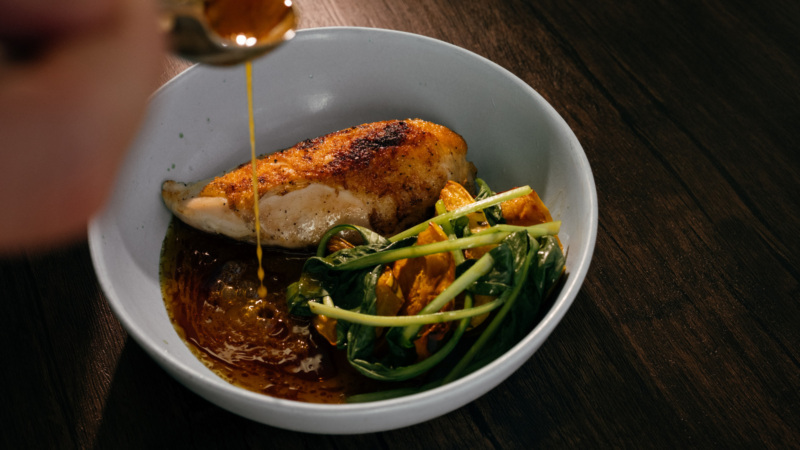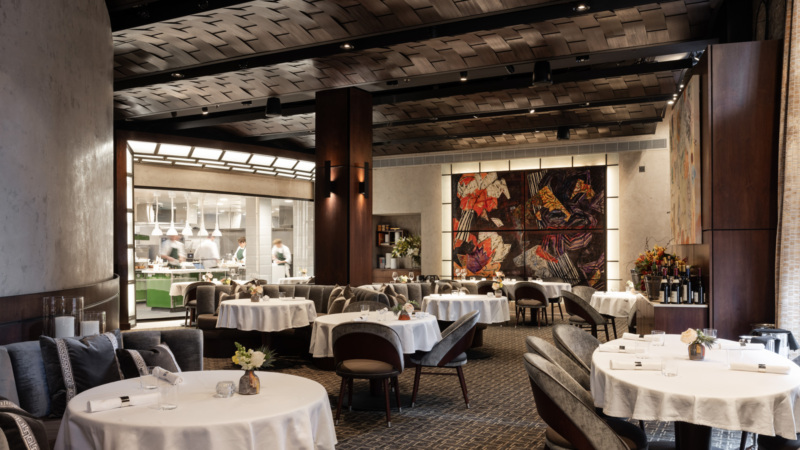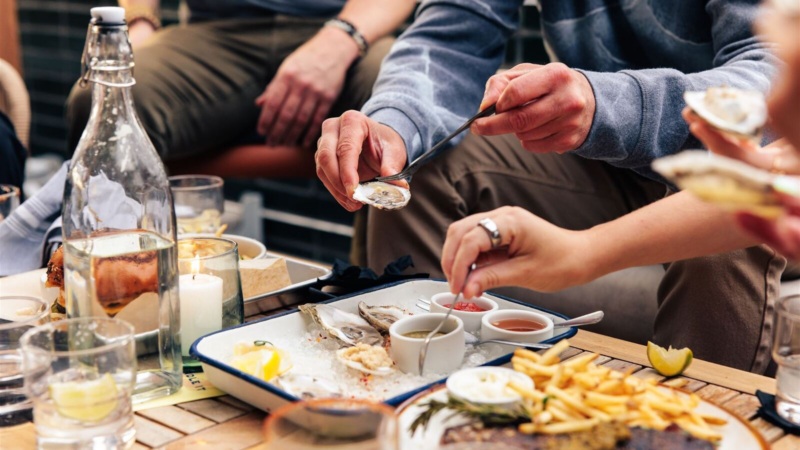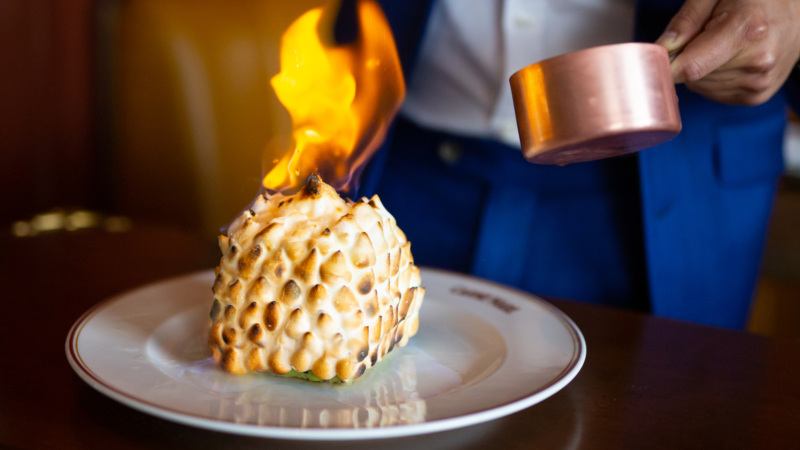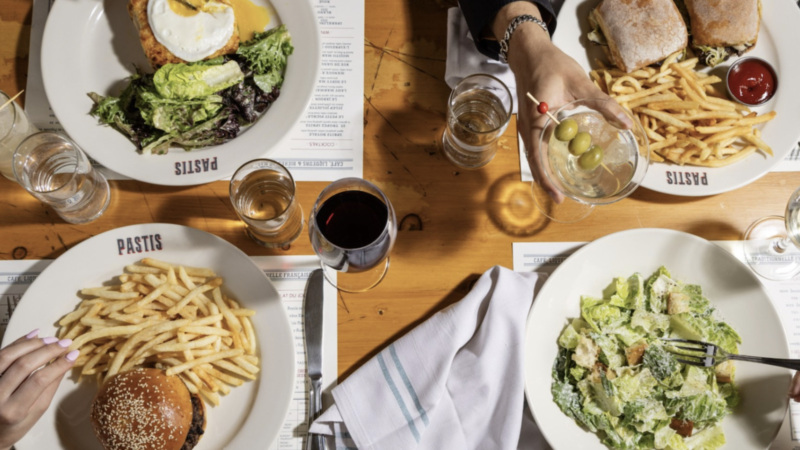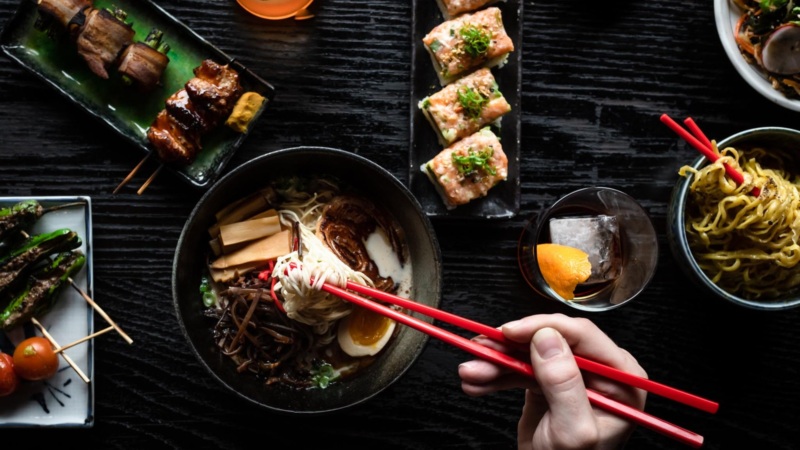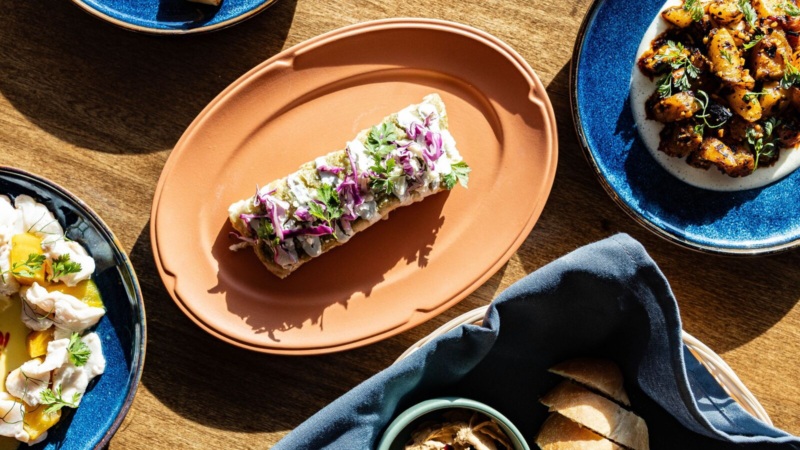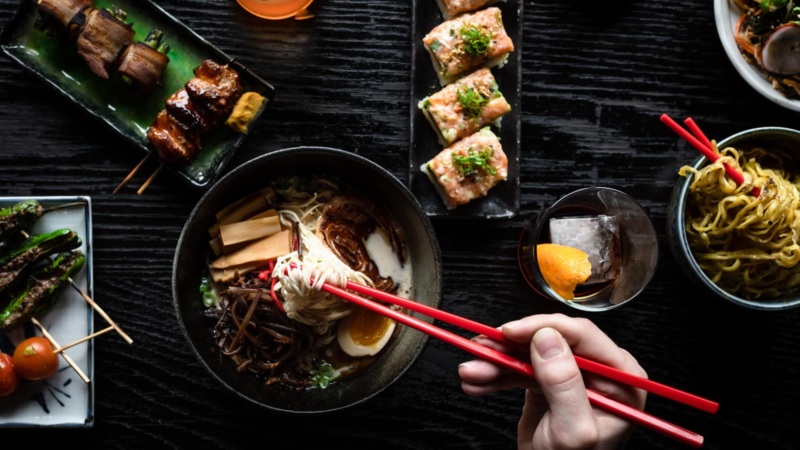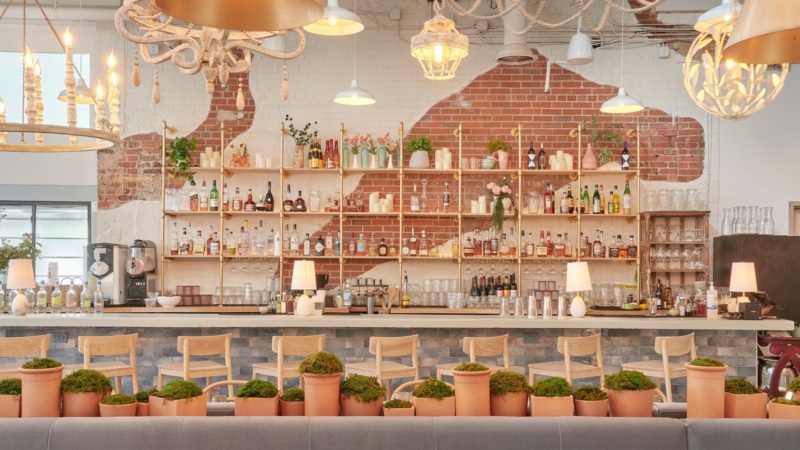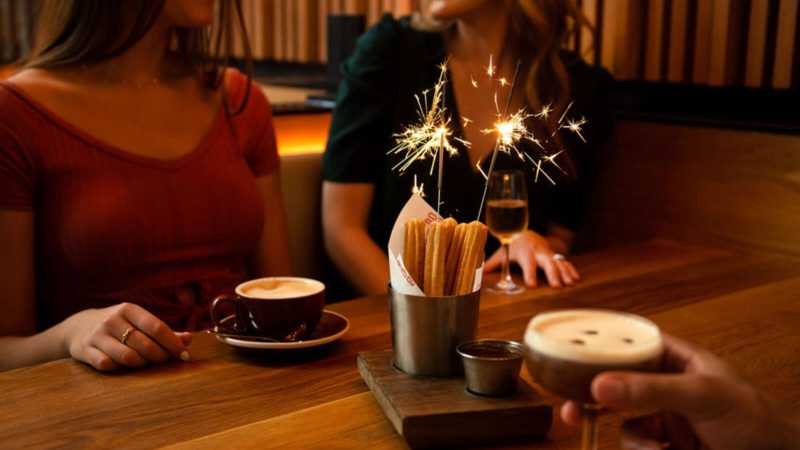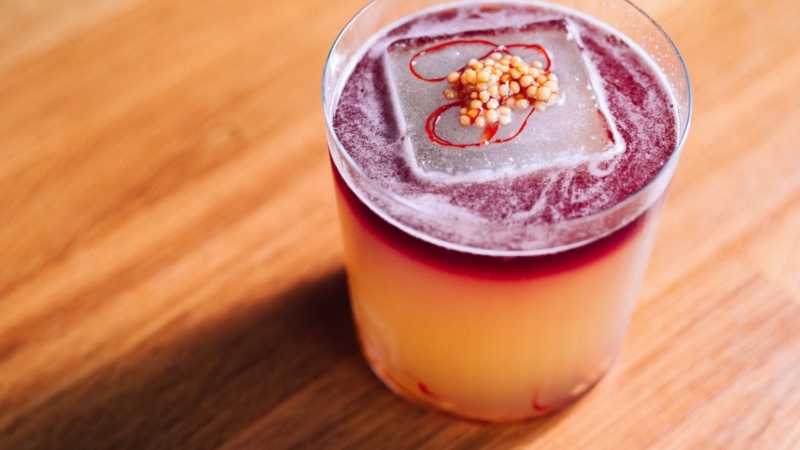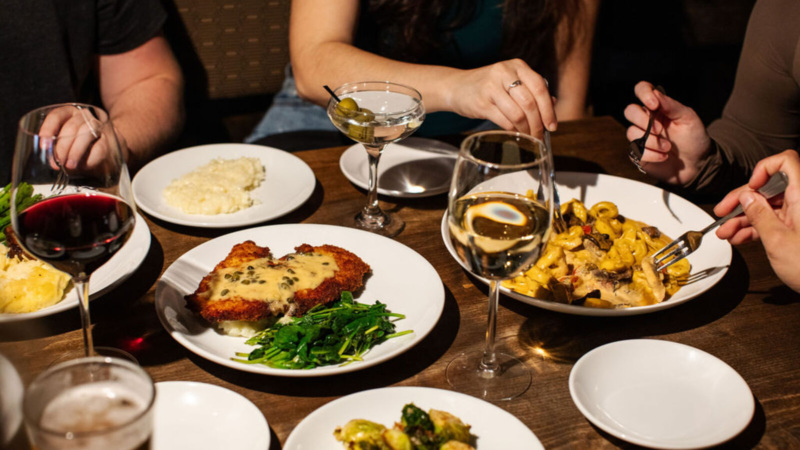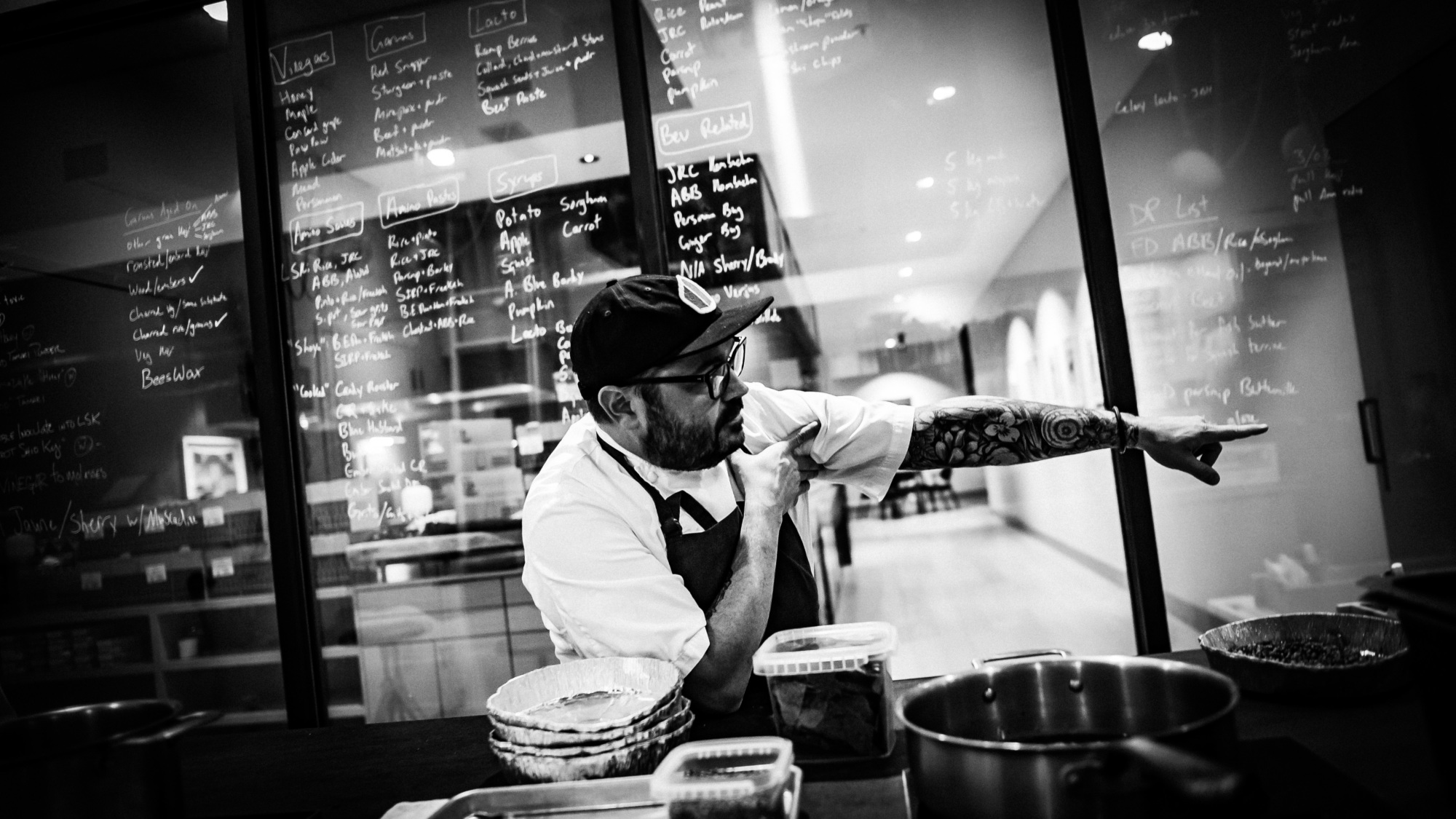
At June, Sean Brock Is Making a Stand For the Tasting Menu
Published:
Chef Sean Brock definitely did not spend the first year of the pandemic hunkering down in his Nashville home. “I’ve opened four restaurants in the last two years,” he says. “It was never supposed to be that way.”
The first was Joyland, Brock’s take on a fast-casual burger, fried chicken and biscuit sandwich joint. The second opening was The Continental in the Grand Hyatt downtown, an elegant love letter to hotel dining, applying modern techniques to classic French preparations. Carts roll throughout the restaurant serving prime rib and pâté en croûte carved tableside, and the popular caviar-and-martini tasting at the Vesper Club bar is a uniquely decadent experience. In other words, The Continental is neither fast nor casual, but it has been a smash hit in Music City.
Next came Audrey, named after Brock’s grandmother, a reverential nod to how she taught him to cook using the native ingredients of his Appalachian upbringing. Combining a calm, zen-like ambiance with rustic furnishings and folk art from Brock’s personal collection, Audrey is an architectural representation of two of the chef’s long-time obsessions: Japan and Appalachia.
The top floor at Audrey has been a bit of a journey. An innovative, produce-driven bar opened in late 2021, and a Research & Development lab has been investigating potential ingredients for months. After three name changes and years of anticipation, Brock has finally opened up reservations for June, his 32-seat tasting menu experience upstairs from Audrey opening in mid-July. (“It’ll be my last one for a long time, maybe ever,” vows Brock.)
Brock offers prix-fixe tasting menus at both The Continental and Audrey, and his talent at creating multicourse journeys of flavors and ingredients during his former stations at Nashville’s Capitol Grille and at McCrady’s and Husk in Charleston are legendary among lucky diners who experienced them. But at June, Brock plans to take the tasting menu to a new level, utilizing some secret weapons like his R&D lab, and elements of Japanese kaiseki service, to create something vibrant and new.
We spoke to Brock about his plans for June, come July.
This interview has been edited for length and clarity.
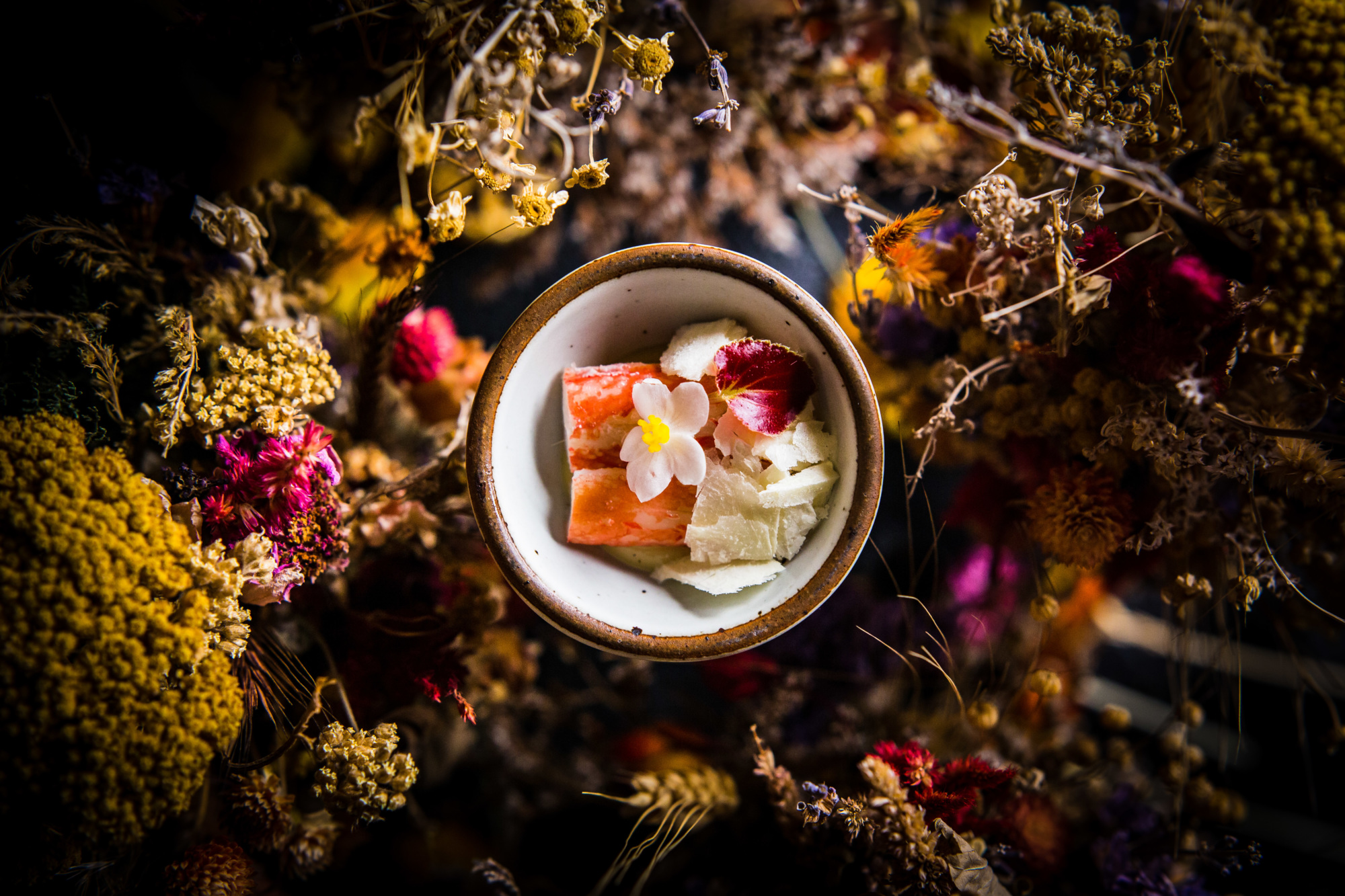
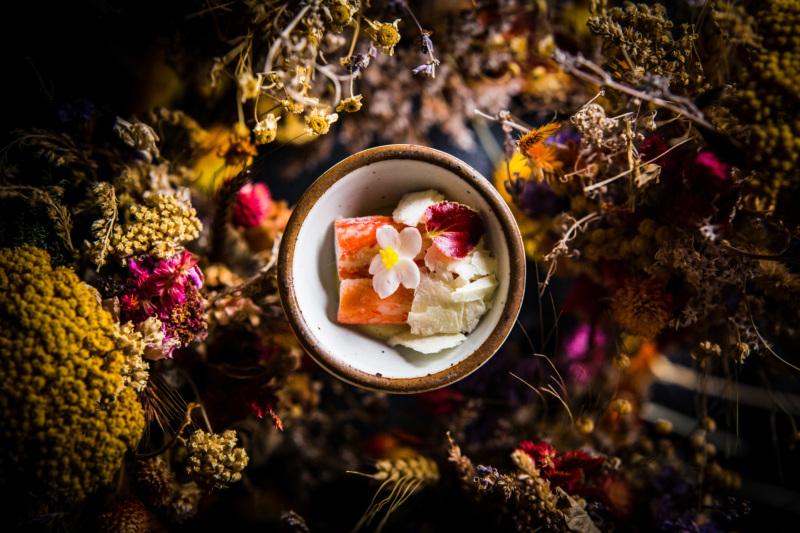
What will be the format of service for the tasting experience at June?
It’s a pretty intense experiment. I’ve always had a bizarre infatuation with doing new things, so we use that as a starting point. I’m always saying we have to push ourselves, but how do we come up with a new way to present a tasting menu? I locked myself in the library to focus on creating a unique experience.
I was interested in finding a way to serve a lot of different composed plates in a shorter amount of time. I don’t want to sit for four hours, and a lot of people feel that way. We’ve created a way to serve twenty servings, more or less, at a very fast pace.
The experience is broken up into acts. Act 1 is the welcoming act, where we hit you with six to eight one-bite canapés so you get to see quickly where we’re headed. The second act is inspired by the water, three plated dishes of three to four bites each. I’m a little different; I measure course size by actual bites.
In between each course is a smaller one- to two-bite dish or maybe a liquid. I’m a real Japanophile, and I study the traditions and cuisine. I stumbled across a concept known as oshinogi, a one- or two-bite course. I love the idea of always having food on the table, and I grew up with a table full of food at my grandma’s, so I hate to see a table with no food on it.
Act 2 is a pretty rapid-fire presentation of six different creations based on water. The oshinogi concept helped me realize it can be a useful flavoring agent for the next course. An example might be a heavily-flavored shot of consommé made with a pretty insane pine extract from the lab. Those flavors will stick around in your mouth and flavor the next course. We call it “reverb.”
It’s like music. My favorite records are the ones where you listen from track 1 to track 11. Each song leads into the next. The last bite of Act 1 will purposely flavor the first bite of Act 2.
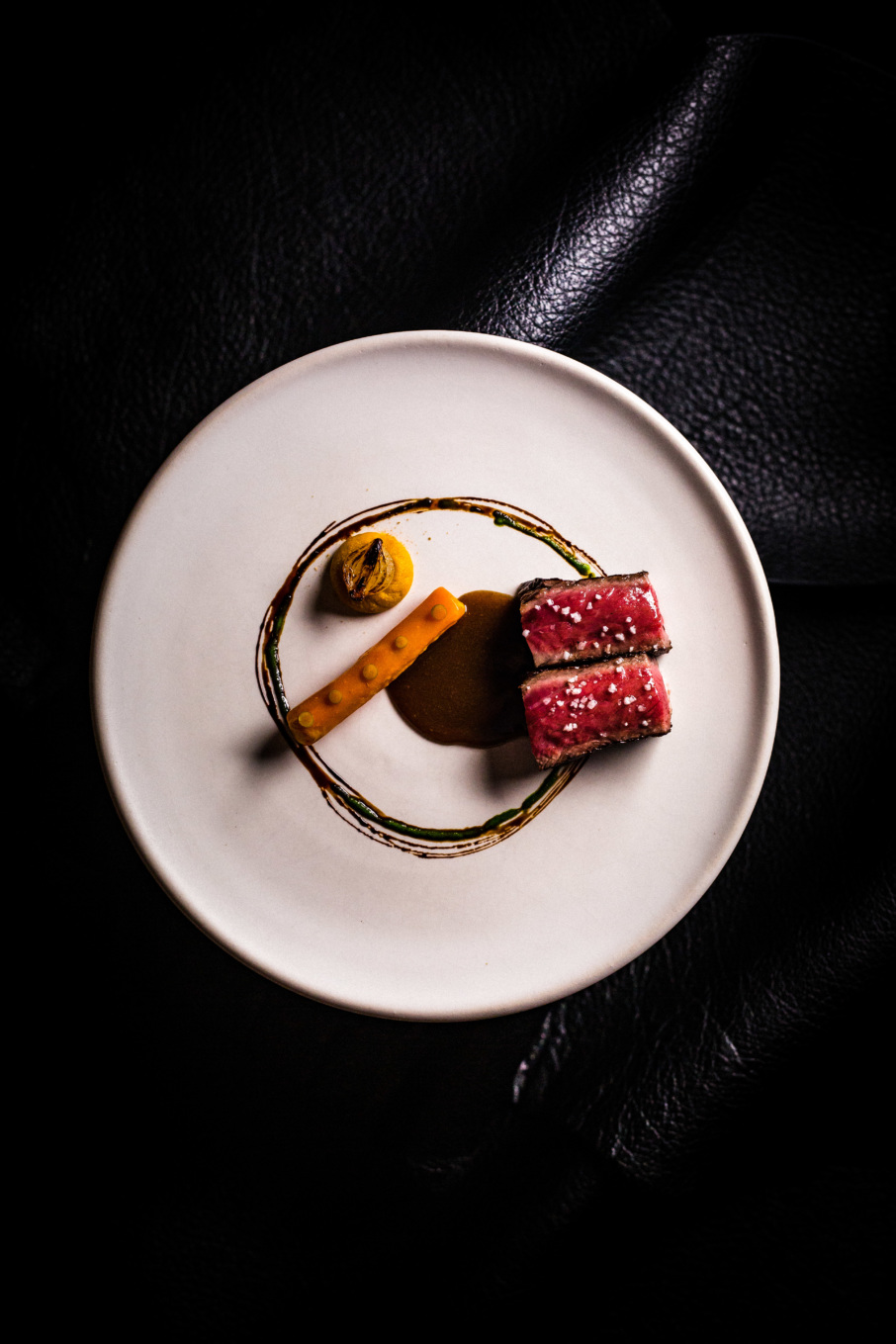

So in a Spotify world where people can listen to a single song instead of an entire album or just choose a playlist from the most popular cuts, you’re asking diners to take the ride in the order you choose?
That’s right. They have to pay more attention that way, and we want to engage with people. It’s the difference between à la carte and prix fixe. People can have choices downstairs at Audrey, but at June we drive the experience. The fun part is that it’s all in one building.
At McCrady’s and Husk, I got to get wild and wacky with creative techniques, and I’ve been making tasting menus since 2003. This represents the culmination of all that I’ve learned from cooking and eating since then.
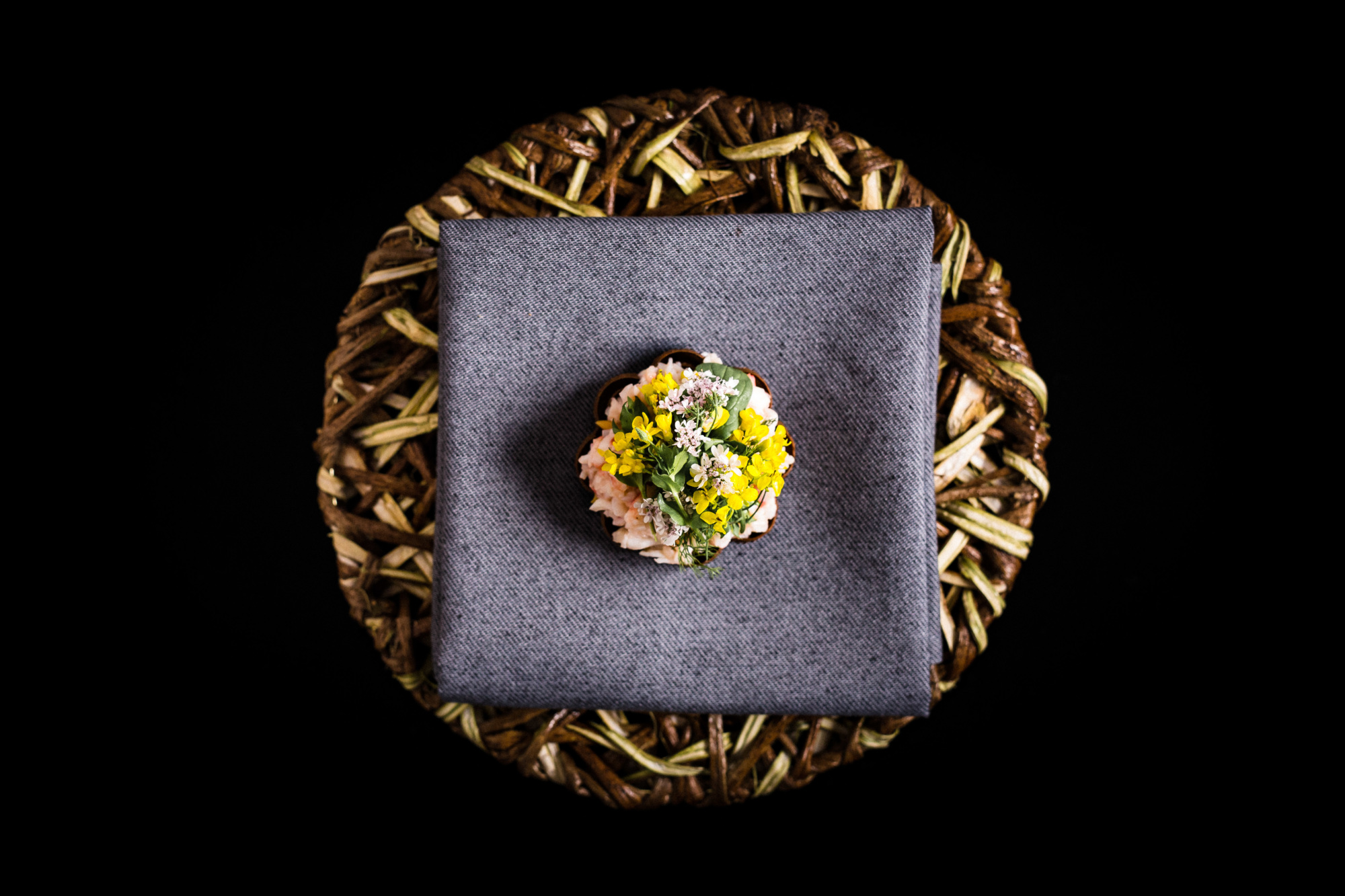
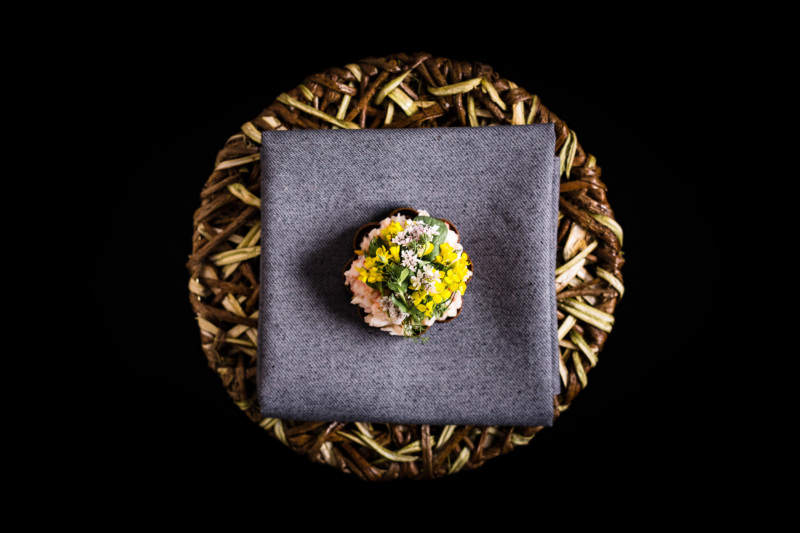
What comes next after Act 2?
Act 3 is from the land, three plated dishes with oshinogi in between. Act 4 will be three plated desserts alternating with small bites, and the last act is the flip side of the first, some sweeter canapés or petits fours.
It’s all meant to create a seamless flavor experience, including some sort of liquid course from [bar director] Jon Howard. We’ve actually made a station in the kitchen for Jon, and now that he’s contributing to the menu with liquid, he has to think like a chef. He’s been creating some incredible things, and not necessarily with alcohol. It’s been really cool to have him as part of the process!
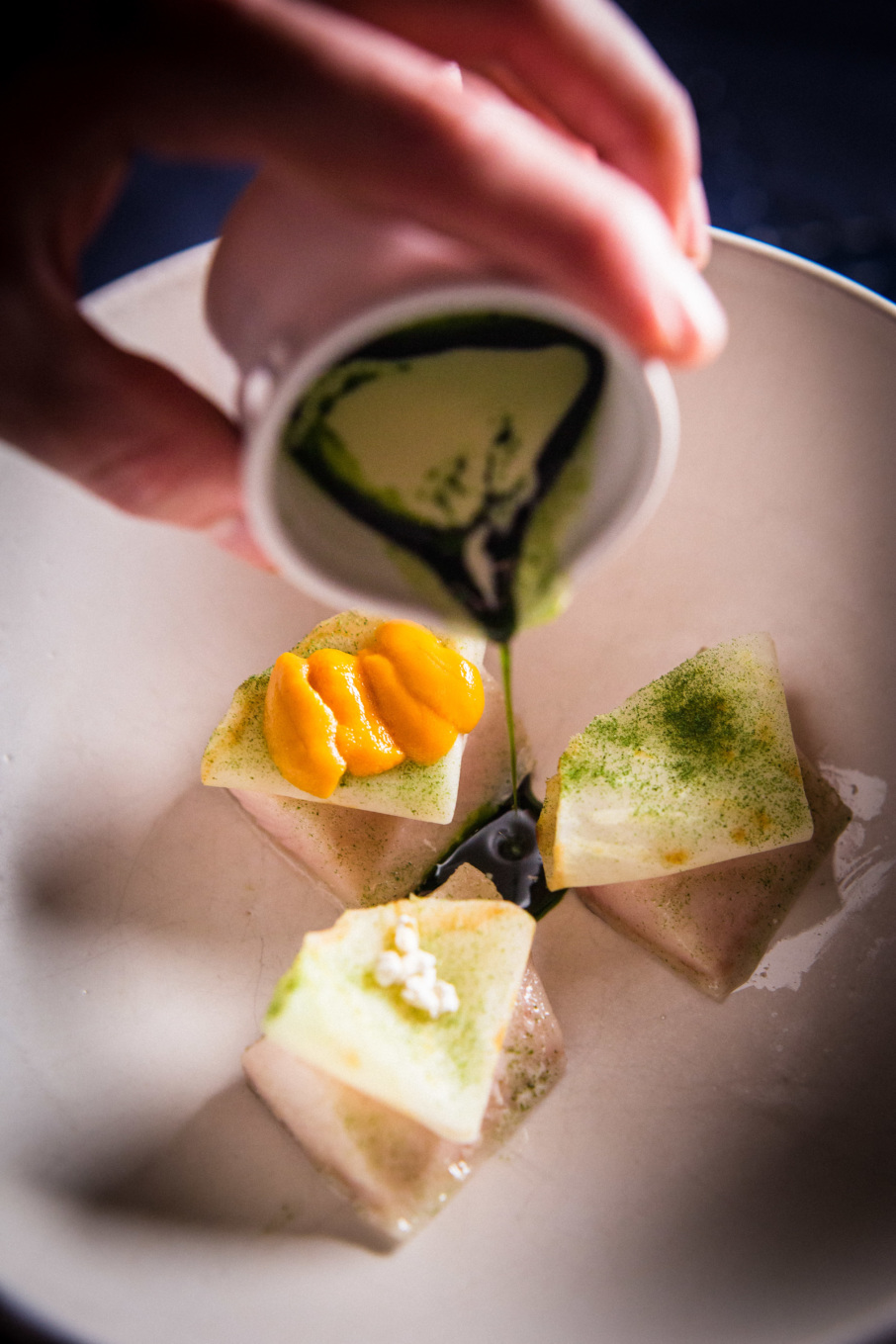
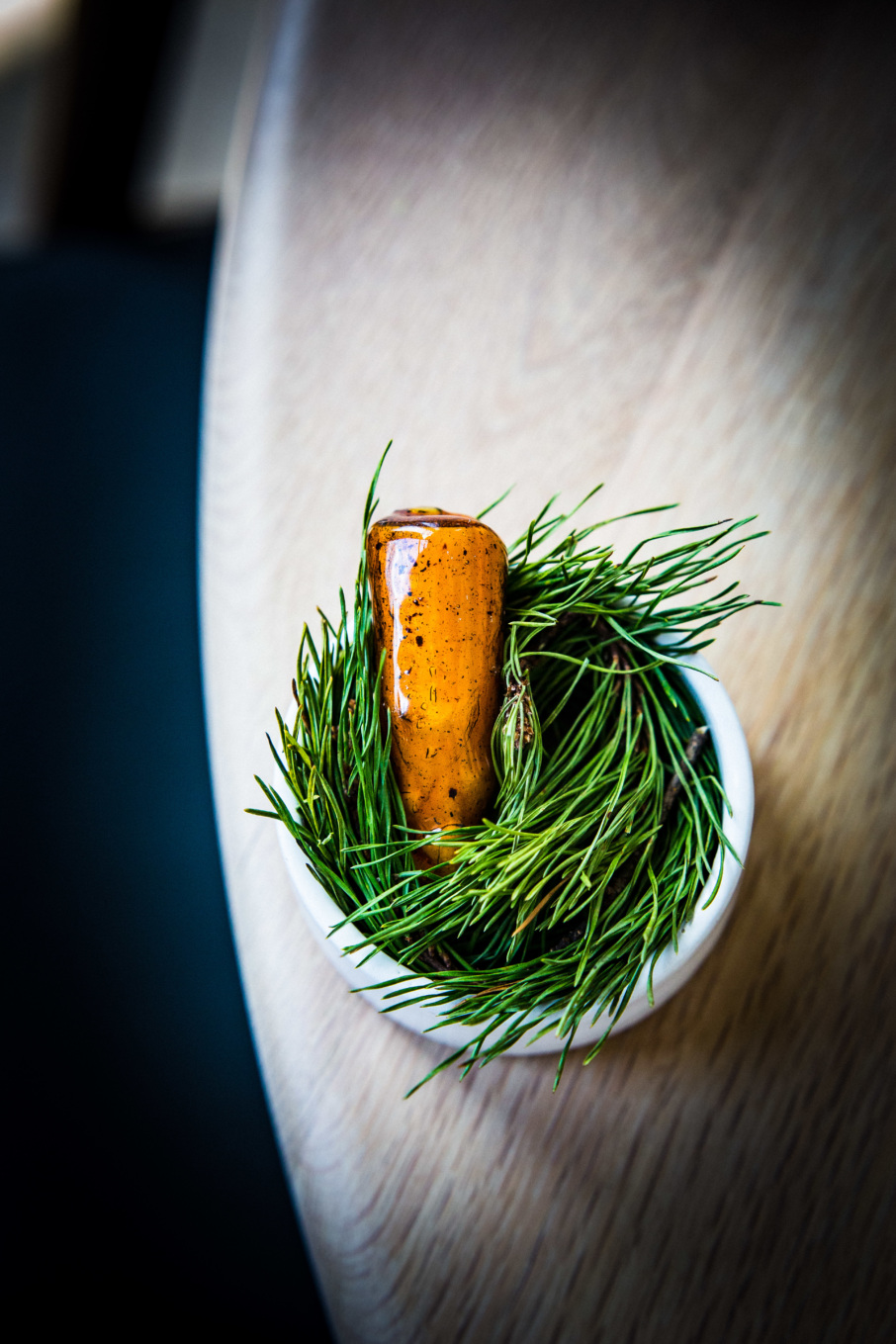
How do you expect the menu to evolve over time?
It’s hard for me. I’d like to cook new dishes every day, but I can’t expect everyone to do that with me. We’re planning to do eight menus a year, two per season, based on what ingredients are at their best. The creativity comes after the product.
Do you see the intimate style of a tasting menu as the future of dining?
The tasting menu format has two enormous positives. One is giving something special to people who have been eating takeout for the last 2 years — a stranger dropping a bag on the porch after it’s traveled for 45 minutes. For most of us, that’s not the favorite way to eat. This is the opposite end of the spectrum. You can sit down and not think about anything. We promise these are going to be the best products on earth today. We’re also thankful to be able to feed people again in a dining room.
The second big positive is what it does for the stress level of our team, our kitchen, and our servers. I’d go out on a limb and say four out of ten on the stress levels vs. ten out of ten for à la carte service.
With a full book of tasting menu diners, the kitchen can perfectly prep 44 partitions of each ingredient, so the work and the service are so much easier. You’re not guessing about who’s going to order what, and each course, we’re completely focused on that one course.
It’s also so much less wasteful. With a full menu, it’s a guessing game, but at June, we know exactly how much to order a month out because our reservation books are full. Our biggest hurdle has been cancellations. There was a day last week where we had 50% cancellations. We have to try to go on Instagram to tell people that we have openings. Now that team that has bills to pay is going to make less money. It’s tough.
But it’s been my dream come true to see the cooks as relaxed during service as they are during prep.
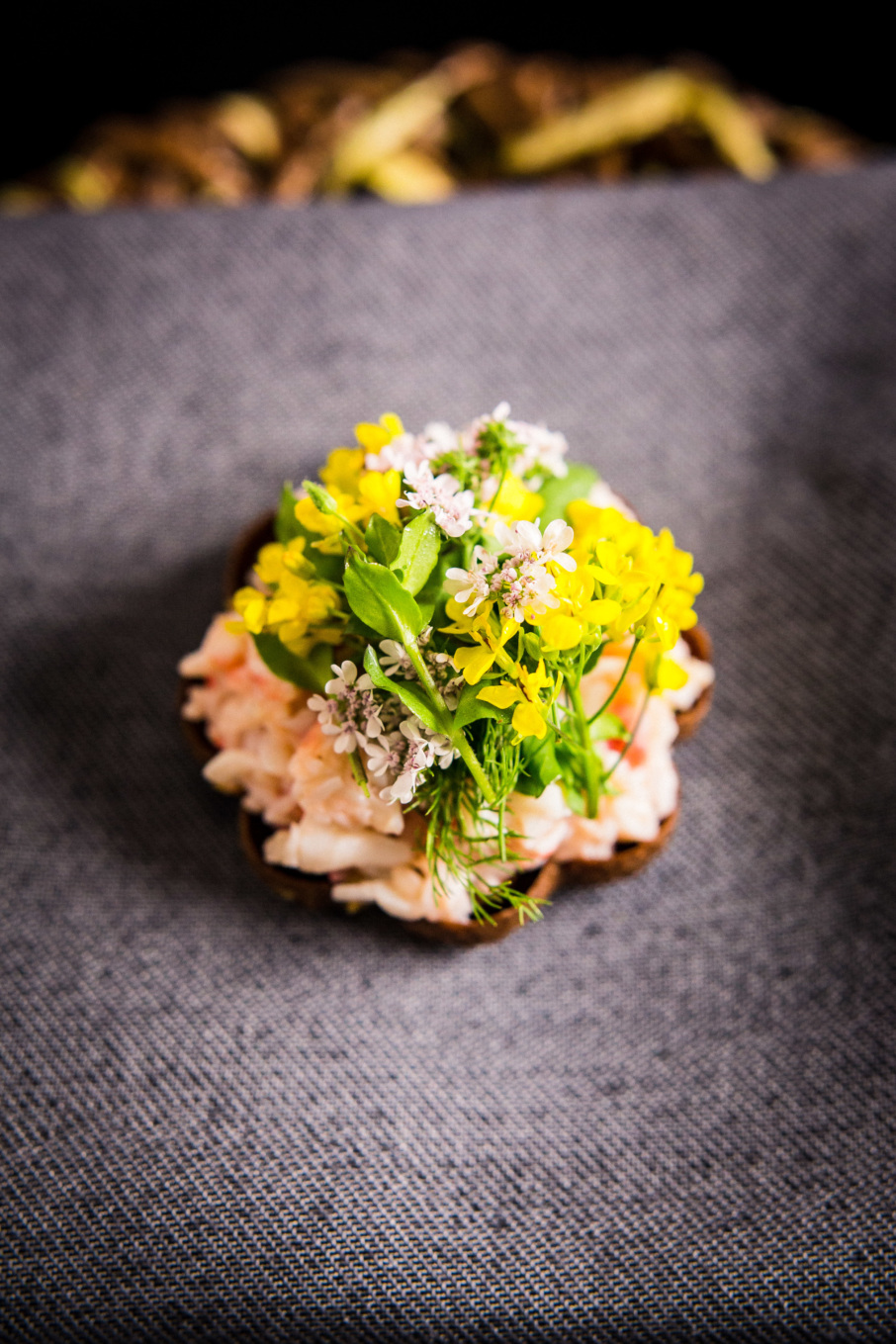
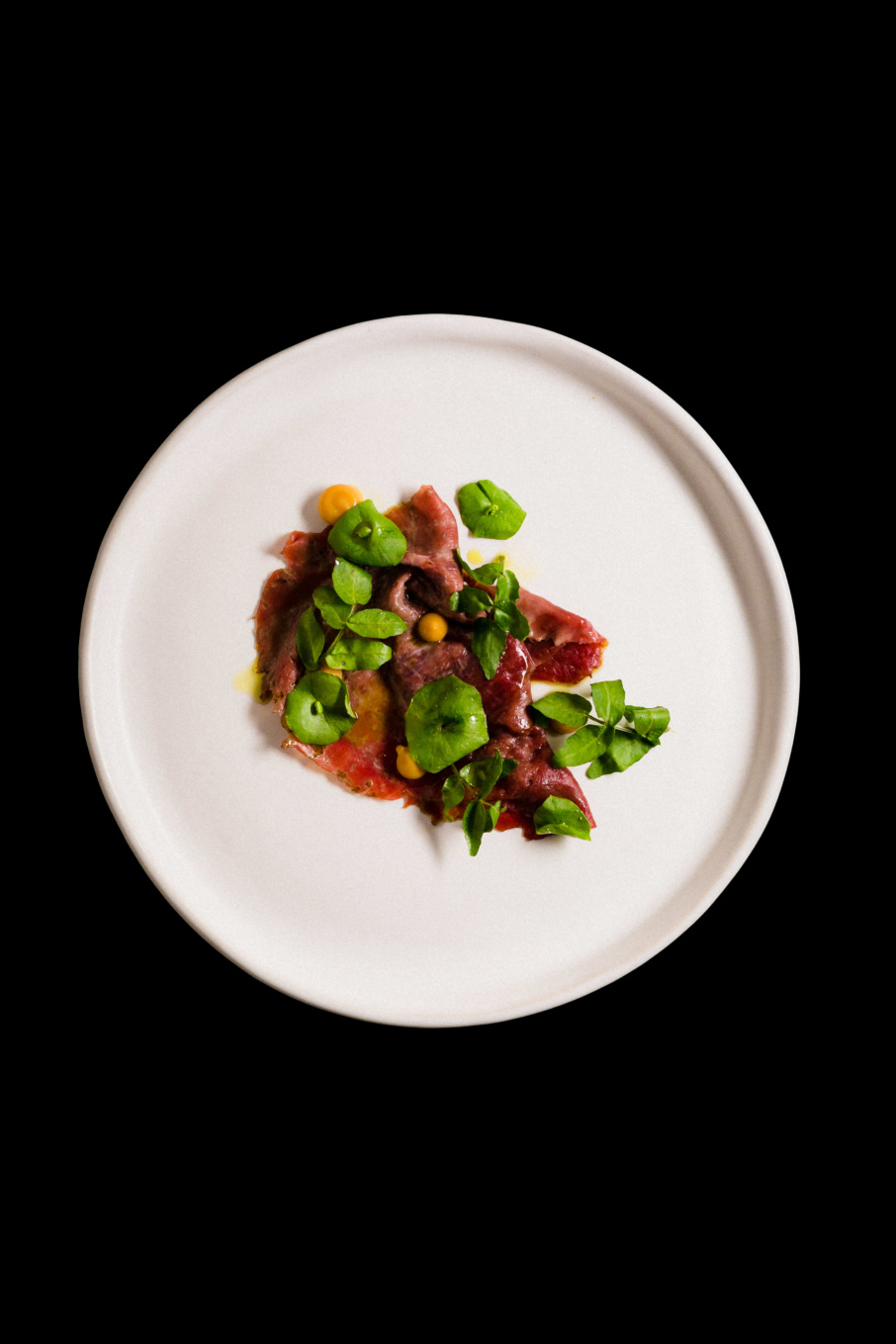
Where have you been drawing inspiration for the menu at June?
Both Audrey and June have a tinge of Appalachia in them, but I don’t want to limit myself like I did at Husk. [Brock only allowed ingredients from the South to come through the kitchen door at Husk.] I want to be able to choose the ingredients that I want to use. Here, there are no rules, but our creative process is very organized and rigid. There always has to be a story to be told.
I use Appalachian ingredients as a key tool. We got our first round of Vidalia onions recently, and they were just incredible. We made a custard in an eggshell and made a ragout of onions cooked in hickory embers to focus on the product. We tasted it, and it needed another layer. That’s when we go to Appalachia.
We have this massive list of Appalachian ingredients in the library, and I thought of sassafras. We dusted the dish with dried sassafras root we made in the lab, and all of a sudden, we can tell the story of me as a kid, digging up sassafras behind my house, and we’ve created a flavor I’ve never experienced.
Appalachia is full of undiscovered worth, so we think about how we can contribute to Southern food. In the lab, we examine every ingredient as they come into season. They come up with sweet, sour, salty, bitter, and umami versions of each ingredient. The layers of flavors and the level of complexity can come out in every dish. On the plate, this looks like the simplest food I’ve ever cooked, but thanks to the arsenal from the lab, we can unlock all these flavors that were hidden.
I spent the first half of my cooking life concentrating on the food of Charleston, and it’s time to close that chapter — no more Hoppin’ John or shrimp and grits. The second half will focus on Appalachia and on my childhood to help keep the traditions and culture alive. We’ll use the lab to explore every possible way to use those ingredients, and I feel like it’ll take me 20 years to work through it.
This is it. I’m going to be here forever. June represents a life full of lessons learned and wisdom earned.
Terms & Conditions
The Global Dining Access program (“GDA”) is a benefit available to eligible Card Members. “Eligible Card Members” are account holders of Platinum Card® or Centurion® Card from American Express, Business Platinum Card®, Business Centurion® Card from American Express, Corporate Platinum Card® or Corporate Centurion® Card from American Express, Delta SkyMiles® Reserve American Express Card, Delta SkyMiles® Reserve Business American Express Card, and Hilton Honors American Express Aspire Card (and any Additional Card Member(s) on their accounts). GDA may not be available for Cards issued from some countries. GDA provides eligible Card Members with (a) access to exclusive reservations, (b) Priority Notify, which allows GDA members to set notifications to be in the first group notified when tables become available before they are made available to other Resy users, and (c) access to exclusive events. GDA reservations are accessible through the Resy App and Website (“Resy Sites”), and Concierge. Some features of GDA, like Priority Notify, may not be available through Concierge. To access this benefit through the Resy App, you must download the Resy App; or if you already have the Resy app, ensure the latest update is downloaded. When using the Resy Sites, create a Resy account or log into your existing Resy account and add your eligible Card to your Resy account. If you are assigned a new Card number, you must update the Card number in your Resy account. When you use GDA, a badge will be placed on your Resy profile, letting restaurants know that you are a member of the GDA program. Reservations are based on a first-come, first-served basis. In the event of a reservation cancellation, you will be subject to the restaurant’s cancellation policy. Generally, same-day reservations that are not booked by GDA members are released back to restaurants at certain times of day that vary across restaurant policies. American Express and Resy make no representations or warranties regarding the availability of reservations, events, and/or experiences, which shall at all times be subject to availability and the discretion of the applicable restaurant. American Express and Resy are not responsible for informing the restaurants of any dietary restrictions or for a restaurant being able to accommodate such restrictions. There is no cost to you for booking services through GDA, although you are responsible for any purchases or fees you authorize to be charged to your Card account. GDA reservations and events are intended for personal use only and cannot be resold or used for commercial purposes. By participating in the GDA program, you are accepting these GDA terms and conditions, which are in addition to and do not replace the Resy Sites’ Terms of Service. To be eligible for this benefit, your Card account must not be cancelled.
RESERVATIONS are available exclusively for Global Dining Access Members. All sales are final and non- refundable, and resale is prohibited. Payment must be made using an American Express ® Card that is eligible for Global Dining Access. Global Dining Access Members must link their eligible Card to their Resy profile and use it to unlock exclusive access to reservations. Details of events are subject to change. Tickets are available on a first-come, first-served basis. Availability is very limited.



